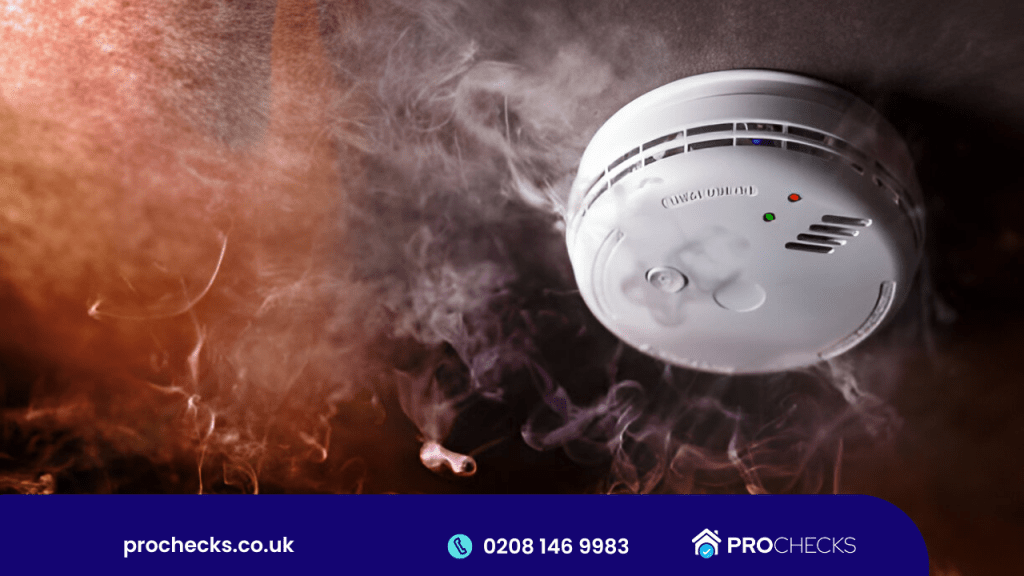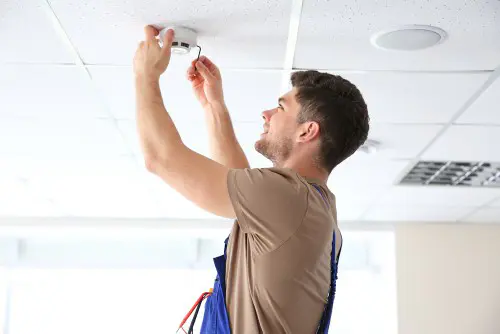In the realm of building safety, the installation and compliance of fire alarm systems are governed by a complex framework of standards and regulations that ensure their effectiveness in emergencies. The meticulous adherence to these standards, such as those outlined by the National Fire Protection Association (NFPA), not only facilitates optimal operational functionality but also dictates the strategic placement of alarms and sensors to maximize coverage and responsiveness. As technology and building designs evolve, the question arises: how can current regulations adapt to accommodate new challenges and innovations in fire safety and alarm systems? This ongoing discussion highlights the dynamic nature of fire safety standards and their critical role in public safety. Let’s understand Essential Standards for Fire Alarm System Installation and Compliance
Introduction to Fire Alarm System Installation Standards
Fire alarm systems are crucial components of building safety, necessitating precise and stringent installation standards to ensure effective operation and swift response during emergencies.

The foundational aspect of these standards revolves around advanced fire detection technology, which must be integrated seamlessly into the broader alarm system design. This integration ensures that signals are accurately and promptly communicated across various platforms, enhancing the system’s reliability during critical situations.
Industry certification standards play a pivotal role in guiding the installation processes. These standards are meticulously developed to align with the latest advancements in technology and safety requirements. They serve as benchmarks that professionals must adhere to, ensuring uniformity and excellence in installation practices across different regions and types of buildings.
Additionally, comprehensive user training programs are essential. They equip system operators with the necessary skills to manage and maintain the alarm systems effectively, ensuring that these systems function optimally when needed the most.
Such training also emphasizes the importance of regular system checks and adherence to safety protocols, further embedding the critical nature of these systems in the minds of those responsible for their operation.
Key Components of a Fire Alarm System
Understanding the key components of a fire alarm system is essential for ensuring its functionality and reliability in safeguarding lives and property. A comprehensive fire alarm system comprises various interconnected elements designed to detect and alert occupants of fire hazards promptly. These components must work seamlessly together, ensuring system integration and adherence to code compliance for optimal performance.
| Component | Functionality | Importance |
|---|---|---|
| Fire Alarm Control Panel (FACP) | Acts as the system’s brain, processing input from detectors and initiating alarm notifications. | Central to system integration and monitoring services. |
| Smoke and Heat Detectors | Detect smoke and abnormal heat levels, triggering the system to alert occupants and emergency services. | Critical for early detection, influencing evacuation protocols. |
| Notification Devices | Such as bells, sirens, and strobe lights, these devices alert building occupants of emergencies. | Vital for ensuring a timely evacuation, directly impacting life safety. |
Each component is integral to the system’s efficacy. For instance, the FACP must be robust enough to handle inputs from various fire alarm types and coordinate the appropriate response, ensuring all parts comply with the latest safety codes. Proper installation and maintenance of these components are crucial in building a reliable fire alarm system that effectively communicates potential threats and coordinates emergency responses.
Regulatory Requirements for Fire Alarm Installation
In the realm of fire safety, strict adherence to regulatory requirements is essential for the installation of fire alarm systems. These regulations, outlined in building codes such as the National Fire Protection Association (NFPA) standards, dictate the necessary specifications to ensure code compliance and effective response in emergencies.\

Building codes specify various alarm types and their respective installation protocols to match the unique needs of different buildings. For instance, commercial properties may require more complex systems than residential buildings, involving manual pull stations, smoke detectors, and voice evacuation systems. Each type of alarm system must be selected based on a thorough risk assessment and environmental consideration to optimize safety and compliance.
Moreover, installation training is mandated to ensure that technicians are equipped with the latest methods and understanding of system upgrades and technological advancements. This training ensures that the installation personnel are not only proficient in current standards but are also prepared for the integration of new technologies and modifications prompted by upgrades in safety regulations.
Ultimately, ensuring that fire alarm systems are compliant with the latest building codes and installed by trained professionals is crucial for the safety of the occupants and the structure itself.
Best Practices for Proper Fire Alarm Placement and Installation
Building on the foundation of rigorous regulatory frameworks for fire alarm systems, it is equally important to focus on the strategic placement and installation practices that enhance the effectiveness of these safety measures. Identifying optimal sensor locations is paramount, ensuring comprehensive coverage throughout the facility. Sensors should be placed in every room, including hallways and areas of high risk such as kitchens and storage rooms containing flammable materials.
Installation height guidelines must be strictly adhered to, with smoke detectors typically installed on ceilings or, if on walls, between 4 to 12 inches from the ceiling. This placement exploits the natural rise of smoke, enhancing early detection capabilities.
Furthermore, noise level considerations are critical to ensure alarm audibility. Alarms should be installed far from sound barriers and in acoustically favorable environments to maintain a minimum sound level of 75 dBA at the pillow in sleeping areas and 15 dBA above ambient sound levels elsewhere.
System integration is also crucial. Fire alarms should be seamlessly integrated with other building management systems to facilitate coordinated emergency responses and avoid false alarms, which can be minimized by choosing appropriate sensor types and regular calibration to adapt to environmental conditions.
Testing, Maintenance, and Compliance Protocols
Regular testing and diligent maintenance are crucial for the longevity and efficacy of fire alarm systems, ensuring they remain compliant with national safety standards. Periodic evaluations must be meticulously planned to assess both the operational functionality and the integration of system upgrades, which are vital in keeping pace with industry innovations.
These upgrades not only extend the equipment’s lifespan but also enhance the system’s responsiveness to emergencies.
A comprehensive maintenance strategy should include detailed user training sessions. These sessions are essential to ensure that all personnel are proficient in using the system and can perform basic troubleshooting procedures. Training also prepares the team for efficient emergency response, which can significantly mitigate risks during fire incidents.
Moreover, adherence to compliance protocols demands a systematic review process. This involves regular audits and inspections by certified professionals to verify that the fire alarm system meets all current regulatory requirements.
Such practices not only safeguard physical assets but also protect human lives by ensuring that the system performs optimally when needed.
Common Installation Challenges and How to Overcome Them
Navigating the complexities of fire alarm system installation presents a myriad of challenges, ranging from architectural constraints to regulatory compliance issues. One primary hurdle is wire routing, where the intricacies of building structure demand meticulous planning to avoid electromagnetic interference and structural degradation.

Utilizing conduits and adhering strictly to local building codes can mitigate such issues, ensuring that the integrity and functionality of the wire systems are maintained.
Equipment selection is another critical aspect that requires rigorous attention. It must align with the specific needs of the premises, considering factors like building size and occupancy levels.
The selection process should be guided by both the latest technology standards and compatibility with existing building systems.
Power supply considerations are crucial to ensure uninterrupted operation. Installations should be designed with redundancies such as backup generators and dual power feeds to safeguard against power outages.
Environmental factors such as temperature, humidity, and dust can also impede system efficacy. Choosing equipment that is robust enough to withstand such conditions is essential for long-term reliability.
Conclusion
In conclusion, strict adherence to established standards and regulations is paramount in the installation and maintenance of fire alarm systems. These guidelines ensure optimal functionality and reliability, essential for the safety of building occupants. Effective placement, regular testing, and diligent maintenance are crucial components that contribute to compliance and efficacy. Overcoming common installation challenges through skilled training and knowledge is vital in sustaining high safety standards and facilitating prompt emergency responses in fire incidents.









